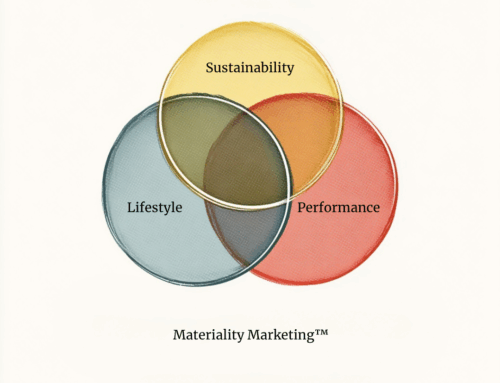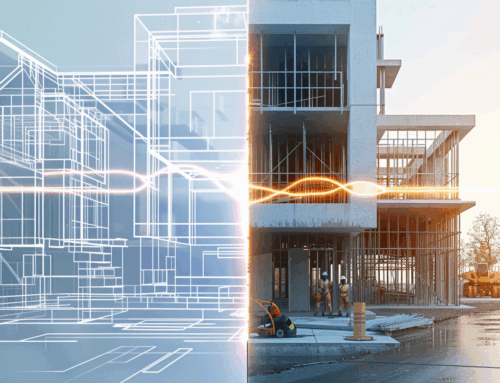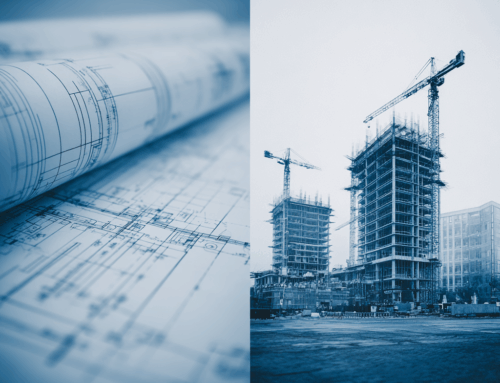7 Key Trends in Green Building Marketing You Absolutely Need to Know
October 1, 2024
In the ever-evolving world of green building, staying ahead of the trends is crucial for marketers looking to make an impact. As more consumers and businesses become environmentally conscious, the demand for eco-friendly solutions is growing. This blog explores the key trends in green building marketing that can help professionals reach their target audience effectively.
1. The Rise of Digital Marketing Strategies
Digital marketing has truly transformed the landscape of how businesses approach the green building sector. As traditional advertising methods become less effective, many brands are leaning into digital. The ability to reach large audiences through social media, email newsletters, and targeted online ads allows marketers to showcase their eco-friendly innovations effectively. Not only does this approach save on costs, but it also facilitates real-time engagement with consumers who are keen on sustainable practices.
In particular, leveraging search engine optimization (SEO) can dramatically improve visibility. With more individuals searching online for green solutions, ensuring your content ranks highly in search results is integral. Incorporating relevant keywords such as “green building marketing” can help connect your brand with those eager to learn more about sustainable options. Engaging content, combined with proper SEO strategies, can position your company as a leading voice in the industry.
Moreover, using analytics tools allows businesses to measure the effectiveness of their campaigns. Tracking website traffic, engagement metrics, and conversion rates provides essential insights. This data-driven approach enables marketers to refine their strategies, ensuring they resonate with an increasingly eco-conscious audience.
2. Building Community and Engagement
Marketers in the green building field are pivoting towards community engagement as a core strategy. This trend emphasizes collaboration and relationship-building with consumers, fostering a sense of belonging around sustainable practices. Building a community around green initiatives not only makes a brand more relatable but also empowers consumers. Welcoming feedback and interaction allows companies to create tailored solutions that meet the specific needs of their audience.
Social media platforms offer a powerful tool to facilitate this engagement. Through regular posts, live Q&A sessions, and community challenges, brands can connect with their audience on a personal level. Moreover, sharing success stories from within the community can inspire others to embrace green practices and participate actively. This approach creates a ripple effect, driving awareness and advocacy for sustainable building solutions.
Ultimately, fostering a community not only elevates brand loyalty but can also lead to increased word-of-mouth referrals. Satisfied customers become advocates for your brand, and this organic promotion can be invaluable in attracting like-minded consumers.
3. Emphasizing Sustainable Certifications
One critical element of green building marketing is the strong emphasis on sustainable certifications. As consumers become more educated about the environmental impact of their choices, the significance of recognized certifications like LEED, BREEAM, or ENERGY STAR cannot be overstated. These labels provide a level of trust and credibility, signaling to potential customers that a product or service meets rigorous sustainability standards.
Marketing these certifications effectively can enhance your brand’s reputation. By showcasing your commitment to sustainability through certified practices, you can differentiate your business in a crowded marketplace. Incorporating badges and certificates prominently in marketing materials and online presence can immediately catch the eye of eco-conscious consumers who prioritize certified products.
Additionally, educational content that explains the significance of these certifications can be a valuable marketing resource. Blogs, videos, and guides illustrating how these standards work and their benefits can position your brand as an authority in green building practices, further bolstering consumer trust.
4. Storytelling for Sustainability
Storytelling is a potent tool in green building marketing that allows brands to connect emotionally with their audience. By sharing authentic stories about the journey of sustainable building projects, businesses can illustrate the real-world impact of their efforts. Narratives that highlight challenges faced, innovative solutions implemented, and the positive outcomes achieved resonate with consumers who care about both the environment and human experiences.
These stories can take many forms: case studies, testimonials, or documentaries that showcase the process of creating sustainable structures. They not only humanize a brand but also inspire others to take action. When potential customers see how sustainability has transformed lives and environments, they become more inclined to support businesses dedicated to such endeavors.
Moreover, storytelling can be effectively shared across various platforms. To maximize reach, consider integrating visual elements, such as infographics showcasing statistical impacts or videos that provide deeper insights into sustainable processes. Visual storytelling complements written narratives and can significantly enhance audience engagement.
5. Personalization in Marketing Campaigns
In the age of information overload, personalization is becoming indispensable. As marketers delve deeper into the practices of green building, tailoring campaigns to meet individual consumer preferences can significantly improve engagement. By leveraging data analysis and insights, businesses can create tailored messages that resonate with the specific values and interests of their audience.
Segmentation is key in this approach. By dividing your audience into distinct groups based on their interests or values related to sustainability, you can curate content that speaks directly to them. For example, homeowners interested in energy-efficient products may respond differently than businesses seeking green certifications. Personalization goes beyond using a customer’s name; it includes offering solutions that align with their sustainable goals.
Furthermore, automated marketing tools can help streamline the personalization process. With the correct setup, businesses can send timely messages, reminders, and content updates based on user behavior, further enhancing the customer experience. This level of attention not only increases engagement but builds trust between the brand and consumers, establishing lasting relationships.
6. Leveraging Social Media for Green Messaging
Social media has emerged as a crucial platform for green building marketing, enabling brands to amplify their message and engage the community dynamically. By utilizing platforms like Instagram, Facebook, and LinkedIn, companies can showcase their projects, share educational content, and connect with other eco-conscious brands. This endeavor facilitates a two-way dialogue, allowing businesses to inform while simultaneously listening to their audience’s needs.
Content can be as diverse as behind-the-scenes looks at sustainable projects, live discussions with experts, or community-driven initiatives that promote participation in green building practices. The visual nature of social media also enables businesses to exhibit the aesthetic appeal and functionality of eco-friendly designs, making sustainability both relatable and aspirational.
Additionally, partnerships with influencers in the sustainability niche can amplify your reach. When trusted voices advocate for your brand, they can introduce your message to their audience, fostering wider acceptance and interest in green solutions. This synergy can significantly increase awareness and engagement levels, ultimately driving more consumers toward sustainable choices.
7. The Importance of Visual Content
In a visually driven world, the importance of visual content in green building marketing cannot be overstated. High-quality images, infographics, and videos serve as powerful tools to captivate and educate your audience. They allow complex information to be conveyed simply and engagingly, making it more likely that the message resonates. This is particularly important in the green building sector, where showcasing the beauty and efficiency of sustainable designs can spark interest and admiration.
Moreover, visual storytelling can elevate engagement on social media and websites. Infographics that explain key stats about energy savings or carbon footprints make the information accessible and shareable, offering another layer of interaction. Research shows that posts with visuals attract significantly more engagement than those without, emphasizing the need to integrate strong visual elements in marketing strategies.
Beyond aesthetics, visual content can enhance your brand’s sustainability message. For example, time-lapse videos documenting the construction of a sustainable building can illustrate your commitment tangibly. Pair such visuals with heartfelt narratives, and you have a compelling marketing strategy that speaks directly to eco-conscious consumers.
Staying ahead of the trends is crucial for marketers looking to make an impact. As more consumers and businesses become environmentally conscious, the demand for eco-friendly solutions is growing. This is why we invest time and resources to remain involved in the market of green, sustainable, high performance building products and construction. To provide you with the most up to date marketing abilities in the industry.





